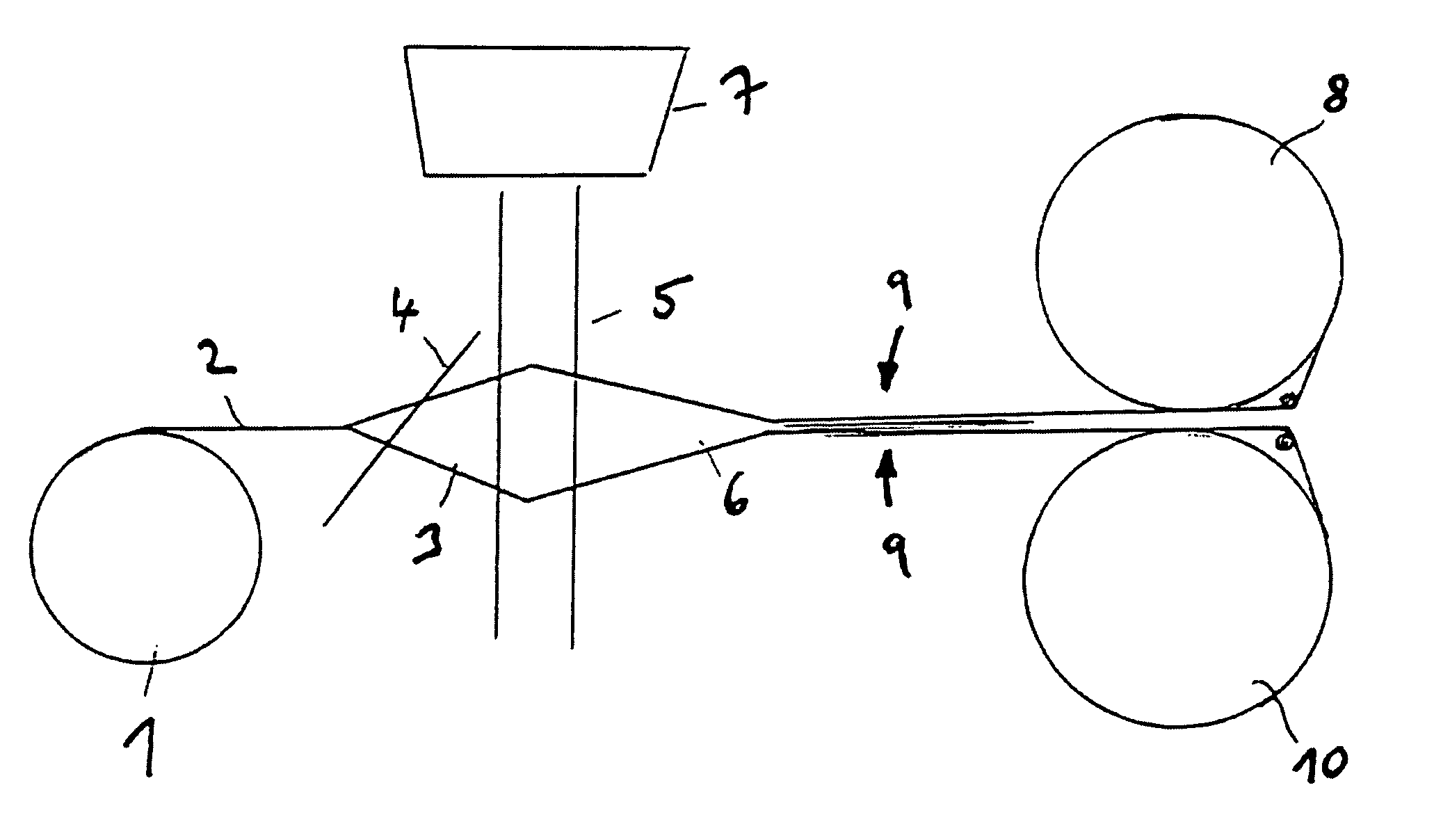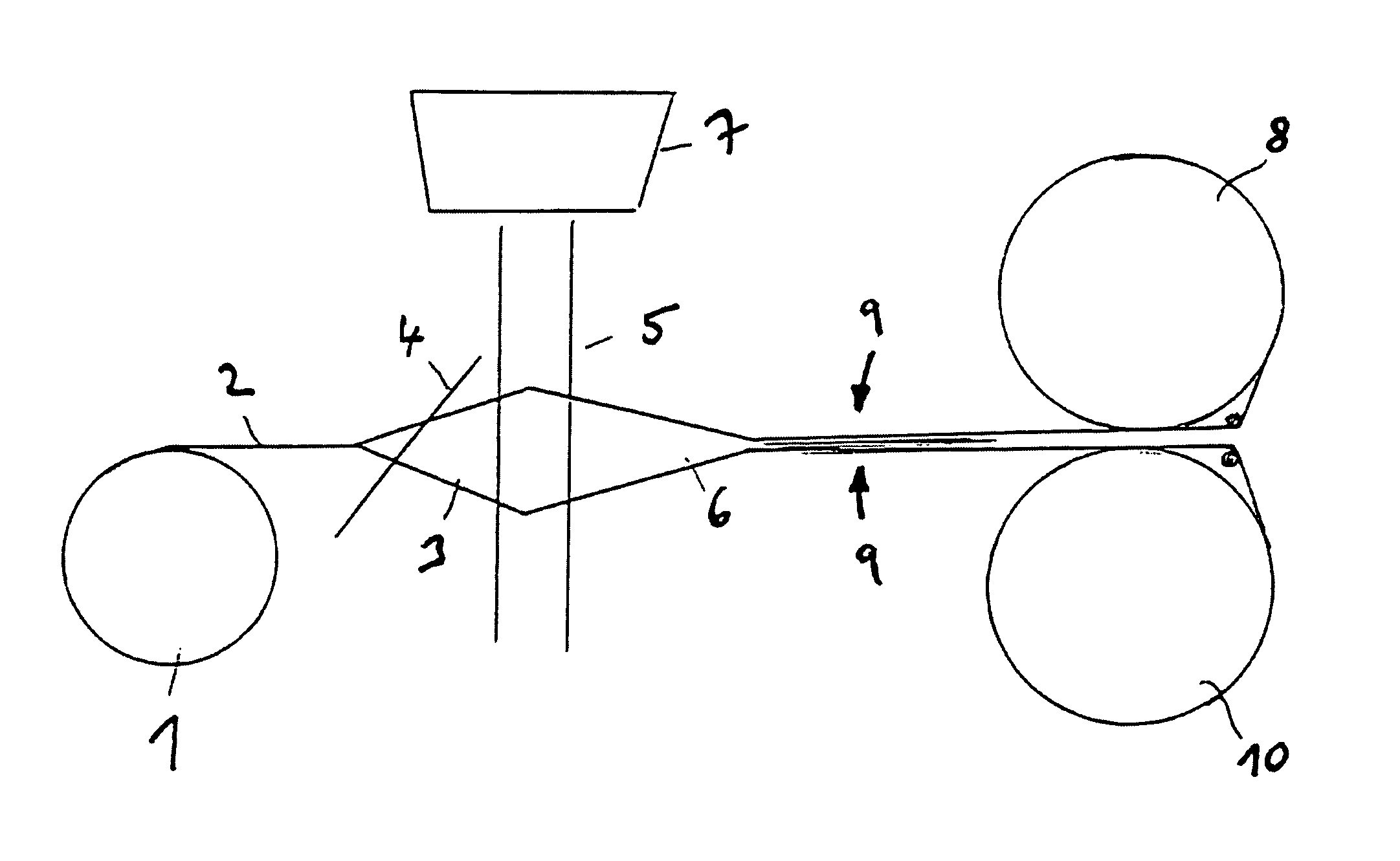Method for fabricating wovens
a technology of fabric and thread, applied in the field of airbag fabrics, can solve the problems of affecting the permeability of the fabric and its visual appeal, affecting the appearance, and affecting the effect of the fabric, so as to reduce the risk of warp threads sticking to each other, reduce the set per beam, and reduce the effect of set per beam
- Summary
- Abstract
- Description
- Claims
- Application Information
AI Technical Summary
Benefits of technology
Problems solved by technology
Method used
Image
Examples
Embodiment Construction
[0013]The method in accordance with the invention will now be detailed by way of example with reference to the drawing.
[0014]Referring now to the sole FIGURE of the drawing there is illustrated diagrammatically an arrangement of a weaving machine as viewed from the side. The warp beams 8 and 10 furnish bands 9 of warp threads to the weaving location. In the region of a harness packet 5 of a Jacquard machine 7 (indicated stylized) the reciprocating motion of the individual warp threads forms the back shed 6 and weave shed 3. In the region of the left-hand end of the shed 3 the reed 4 is evident, from which a single- and / or multi-ply fabric 2 is reeled by a product takeup reel 1.
[0015]Making use of two or more warp beams in accordance with the invention in interweaving single- and / or multi-ply fabrics also makes for a substantial cost advantage, since the frequency and time needed in changing the warp is reduced by the application of a plurality of warp beams.
PUM
 Login to View More
Login to View More Abstract
Description
Claims
Application Information
 Login to View More
Login to View More - R&D
- Intellectual Property
- Life Sciences
- Materials
- Tech Scout
- Unparalleled Data Quality
- Higher Quality Content
- 60% Fewer Hallucinations
Browse by: Latest US Patents, China's latest patents, Technical Efficacy Thesaurus, Application Domain, Technology Topic, Popular Technical Reports.
© 2025 PatSnap. All rights reserved.Legal|Privacy policy|Modern Slavery Act Transparency Statement|Sitemap|About US| Contact US: help@patsnap.com


